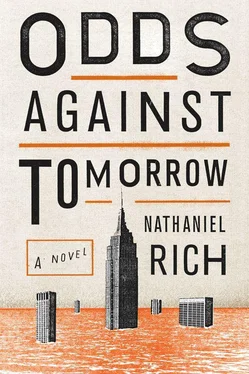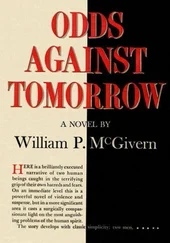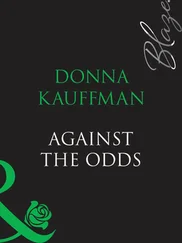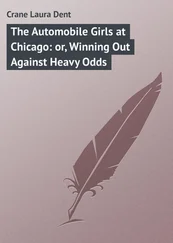“How is it?” Jane asked Herman. “In New York?”
“You know it’s real bad,” said Herman, “because you can’t see anything. I mean, there’s news videos, things like that? I seen waves — I’m saying whitecaps — on Broadway. Right in front of Lincoln Center. Taxis — a dozen? Floating in a pack down First Avenue. Like a school of whales. Yellowback whales.”
“Have you heard any numbers?” asked Jane.
Herman shook his head. “The problem is that you can’t tell which of those pictures is fake.”
“Fake? How?”
“You seen the Swimming Boy?”
They had. It aired on the television in the Fort Lee gymnasium, and they had caught it again at a service station near Lowell where the bus driver had taken a fifteen-minute smoke break. The clip was an instant smash; it had already been viewed online half a billion times. The video was shot from several stories up, presumably from a window across the street. The subject of the film was a blond-haired boy, no older than twelve, who finds himself standing alone on the roof of a car in the middle of a residential block. It might be the Lower East Side, Carroll Gardens, perhaps Bay Ridge. The car sits like a boulder in a fast-moving channel, the water galloping wildly on either side. At the beginning of the clip the boy waves across the street at someone, trying to communicate. The camera pans down to reveal a second, older boy — his brother, by the looks of it — halfway down the block, standing on a high stoop that is not yet submerged. He gestures for his younger brother to join him, to swim across the street.
The little towheaded boy takes a deep breath, his shoulders rising and falling. He leaps — headfirst, arms outstretched — into the churning water. He wheels his arms and kicks wildly, but he is no match for the current. He flies past his brother, who is now screaming in despair, and careens to the next block. There, just before it seems he will collide with a parked van, he bobs beneath the water — apparently for good.
Then, out of nowhere, a police patrol airboat sweeps into the intersection. The officer, leaning over the guardrail, reaches into the water and pulls the boy out by his wrist. The boy spits and heaves, but he is alive. Newscasters asked viewers to identify the savior and the courageous swimming boy.
“Did they find him?”
“Sure did,” said Herman. “It’s fake. It’s actors.”
“Impossible.”
“That’s the story today. Producer in Hollywood has politician friends. He had footage that never made it into some old disaster picture. Does a little touch-up to make it look like New York. Then the government sends it to the news programs.”
“But why would they do that?” said Jane. “That’s sick.”
“They need to tell a story. Distract from what’s actually going on. Hell, even if people find out the truth, that’s no worse — one more day of distraction. Point is, they don’t want us to know how bad it is.”
It occurred to Mitchell that Herman was right. Tammy was worse than anyone could imagine. Like all major catastrophes, it surpassed the limits of imagination. And what was human imagination, after all, but the reconfiguration of past events? Tammy — like Seattle — was an innovative disaster. Its horrors were unprecedented. It created images that man had never seen before, but once seen, could never be unseen.
Yet Jane, as they drove at eighty miles per hour back to the flooded city, seemed emboldened. Exhilarated even.
“Do you think this is just the beginning?” she asked Mitchell.
“Beginning of what?”
“That there will be more hurricanes and more floods?”
“That’s the trend. Natural disasters have been trending upward for the last three decades.”
“But what do you think?”
“It will get worse, but by how much I have no idea. Our expectations are constantly being surpassed. The scales need to be recalibrated.”
“Then we’re in the right line of business. Wouldn’t you say? The more uncertainty, the higher the stakes — Future Days will only get bigger and bigger. Futurism is the way—”
“Don’t.”
“ Of the future! Sorry. It wanted to come out.”
They laughed, a bit too hard. It wasn’t funny. They just wanted to laugh. And as they laughed, Mitchell realized how badly they had been craving human things — laughter, certainly, also intimacy, cleanliness. But they’d wanted animal things too: food, water, sex. The animal things they had wanted even more desperately.
“I don’t know why I’m laughing,” said Jane. “If I didn’t, I guess I’d cry.”
He didn’t know whether it was the sight of Jane about to break down that did it, or the thousands of people gridlocking on the northbound side of the interstate, the fossils of their destroyed lives strapped to the roofs of their cars, or the highway signs twisted like paper clips, or the roadkill, which was everywhere, not just deer and skunks but birds and a black bear lying flat on its back, its teeth gleaming an unnatural white, and cats and dogs by the dozen with name tags around their broken necks. But it was only now that it occurred to him that Elsa, most certainly without medical care, had entered some new hell. For all he knew, she was dying this very second. Maybe she was already dead.
As the bus passed Hartford (PLEASE ENJOY THE “INSURANCE CAPITAL OF THE WORLD”!), the vast absurdity of the whole enterprise became a cattle prod and he was the dumb bovine, and the cattle prod was pushing one simple message into his animal brain. The message was: disorder always won in the end. The idea that man could order the world to his own design was the most pitiful fairy tale ever told. An empty house, left alone for just a single year, begins to return to the earth. It starts with a storm, a ceiling leak. Pollen and rainwater seep in, and before long, a tree has taken root in the living room, its branches pushing out the windows, the birds and squirrels invading. This was true of man too. Even the most brilliant mathematician, late in life, was infantilized by old age. He lost his memory, motor skills, potty skills. It was a universal rule. Not even the universe itself was spared. It too was going senile. Space was cooling, and one by one all the stars would go out in the sky. Disaster: from Latin dis- “ill-” and astro “starred,” a calamity caused by an unfavorable configuration of the stars.
Everything was disintegrating, yet here was man, the poor schlemiel, running around with his glue and his tape. Back in the city the federal government was now probably dredging Manhattan, repairing the bridges, planning task forces and emergency construction jobs. There was something insane about it. Pathetic too. The next flood would come, then another one. You could only delay the inevitable. Every arrow pointed down. All the king’s horses and all the king’s men wouldn’t be able to unbreak the egg. What was the point?
Jane, of course, was right — this was where the futurist came in. Essentially a futurist was asked to prevent the future from happening. He was paid to devise solutions that might halt change. The solutions were obvious: build higher seawalls, reinforce the concrete, use stronger alloys. Vaccinate and immunize; pack a Go Bag and a PFD. Preservation was the human instinct, or at least the American instinct. Those in power wanted to be told that everything will stay just as before — as long as you purchase a little insurance. And this was the service that Future Days would provide. In the short term, it would be a lucrative business. And the short term was all that mattered. He was beginning to think there would be no long term.
“We should get an office in SoHo,” Jane was saying. “Or Tribeca. Somewhere downtowny. The public relations team will be crucial. We need to hire professionals.”
Читать дальше












